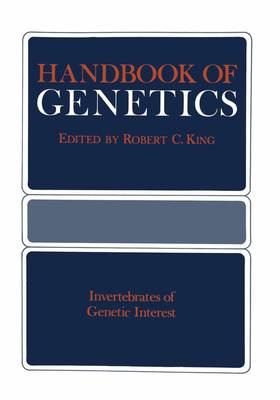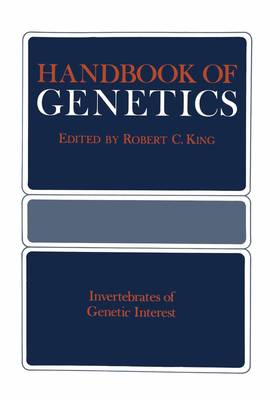
- Afhalen na 1 uur in een winkel met voorraad
- Gratis thuislevering in België vanaf € 30
- Ruim aanbod met 7 miljoen producten
- Afhalen na 1 uur in een winkel met voorraad
- Gratis thuislevering in België vanaf € 30
- Ruim aanbod met 7 miljoen producten
Zoeken
Omschrijving
The purpose of the first four volumes of the Handbook of Genetics is to bring together collections of relatively short, authoritative essays or an- notated compilations of data on topics of significance to geneticists. Many of the essays will deal with various aspects of the biology of certain species or species groups selected because they are favorite subjects for genetic investigation in nature or the laboratory. Often there will be an encyclo- pedic amount of information available on such species, with new papers appearing daily. Most of these will be written for specialists in a jargon that is bewildering to a novice, and sometimes even to a veteran geneticist working with evolutionarily distant organisms. For such readers what is needed is a written introduction to the morphology, life cycle, reproductive behavior, and culture methods for the species in question. What are its particular advantages (and disadvantages) for genetic study, and what have we learned from it? Where are the classic papers, the key bibliogra- phies, and how does one get stocks of wild type or mutant strains? Lists giving the symbolism and descriptions for selected mutants that have been retained and are thus available for future studies are provided whenever possible. Genetic and cytological maps, mitotic karyotypes, and haploid DNA values are also included when available. The chapters in this volume deal with invertebrate species that are favorites of geneticists. Attempts to obtain a chapter dealing with the genetics of Caenorhabditis elegans proved unsuccessful.
Specificaties
Betrokkenen
- Auteur(s):
- Uitgeverij:
Inhoud
- Aantal bladzijden:
- 874
- Taal:
- Engels
Eigenschappen
- Productcode (EAN):
- 9781461571476
- Verschijningsdatum:
- 15/04/2013
- Uitvoering:
- Paperback
- Formaat:
- Trade paperback (VS)
- Afmetingen:
- 178 mm x 254 mm
- Gewicht:
- 1569 g

Alleen bij Standaard Boekhandel
+ 167 punten op je klantenkaart van Standaard Boekhandel
Beoordelingen
We publiceren alleen reviews die voldoen aan de voorwaarden voor reviews. Bekijk onze voorwaarden voor reviews.








